Media | Articles
Buying a Fox-body Ford Mustang? Here’s what you need to know
The Fox-body Ford Mustang is one of the most enduring muscle car icons. Maligned for its various faults as it is loved for its many strengths and its huge impact on the performance market, this imperfect creation was offered from the 1979 to 1993 model years, a testament to Ford’s willingness to squeeze every last drop of juice out of its platforms.
While the Fox chassis would spawn seemingly endless cousins in the coupe, sedan, and even the luxury segment, it’s the Mustang that has managed to stay at the front of the conversation amongst collectors, racers, and customizers, thanks to its winning combination of affordable horsepower, easy modification, and sheer availability.
Throughout its near 15-year reign, the Mustang remained remarkably true to its original concept: a V-8 engine at the top of the spec sheet, a choice between notch, hatch, and convertible body styles, and, of course, rear-wheel drive. There were deviations from this formula, including a brief sojourn into turbo-land, but the Fox’s common mechanical bits have made it remarkably easy to mix and match newer drivetrain parts with older cars, and helped the aftermarket to serve the generation’s entire run.
The Fox-body Mustang, in many ways, is the perfect entry point to classic muscle ownership without having to pay the Boomer tax that’s afflicted 1960s and ’70s offerings. A driver-quality, final-year GT can be had for less than $7500, and you’ll be looking at around $20,000 for the best concours-quality Fox-body you can find. Older cars can add a thousand or two to those numbers, but there’s not a ton of variation from year-to-year in terms of value. Of course, special models and heavily-modified examples will skew these prices, which means it’s a good idea to decide on a budget before putting out feelers.
Marketplace
Buy and sell classics with confidence


Finding a Fox-body Mustang today that hasn’t been beaten into the asphalt by amateur drag racers or treated with all the reverence of a disposable Solo cup on a frat house lawn is perhaps the greatest challenge associated with this particular Ford. To get the skinny on how to identify which cars are worth saving, what models are thin on the ground, and how to avoid common Mustang pitfalls, we spoke with long-time Fox-body builders and restoration shops to get their first-hand advice.
A mountain of Fox-body Mustang models
Fox-body Ford Mustangs are not rare. Ford achieved peak production of this model during the initial 1979 model year, when a whopping 369,936 examples left the factory. As the ’80s rolled forward, the number of Mustangs sold would dip below the 100,000 mark only once, with some years posting sales of more than double that number. In total, 2.6 million Foxes were built, and a healthy percentage of these remain on the market.
It’s possible to divide the Fox-gen Mustang into a few subsets of cars, each of which have their own particular following. From 1979–86 the car featured quad headlights, which were replaced by a single headlight on each side from 1987–93. There are passionate defenders of both looks.
The four-eyed cars are interesting due to the sheer number of changes and updates that were made during their run as Ford tried to figure out the sweet spot in the affordable performance market. This early run witnessed a pair of V-8 engines, an unusual straight-six, a four-cylinder, the brief usage of the Cobra nomenclature, the introduction of the iconic GT trim level, the short-lived SVO turbo, the convertible model, and fuel injection. In contrast, the ’87–93 models were much less scattershot and focused mostly on improvements to the 5.0 V-8 and the presence of special-edition models to cap off the end of production in 1993.
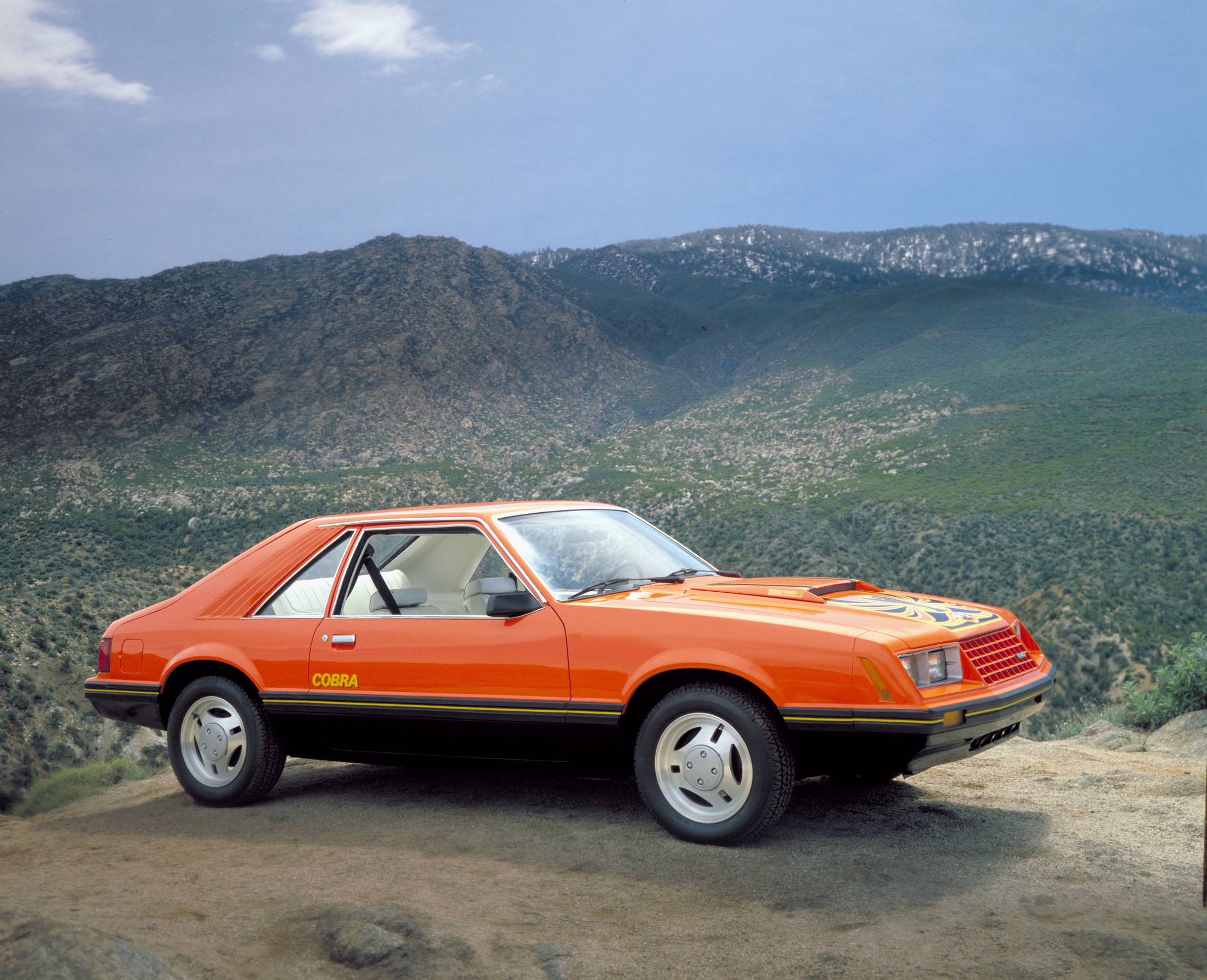
Ford kept things relatively simple from a trim level perspective when making its own Mustang calculus, with the exception of the 1979–81 model year, which saw such disappearing models as the Ghia, the Pace Car, and the Cobra (the latter of which wouldn’t return until ’93). The long-running GT (which featured the most elaborate body cladding and stiffest suspension) first appeared in 1982 but would get a 210-hp High Output motor in 1985 with roller cams and a four-barrel carb, around the same time that the LX (which vacillate between base and comfort-oriented features) also became a permanent addition to the order sheet.
In between are years when Ford simply sold coupes, convertibles, and hatchbacks without any other modifiers (1983), added the letters L (1984), or GL/GLX to the same (1982, ’84), and introduced a Turbo GT alongside the V-8 as a precursor to the more focused SVO (1984). You’ll also occasionally see confusing mentions of a 1984.5 model-year Mustang, which was created to celebrate the 20th anniversary of the nameplate (and which came with its own commemorative, appearance-package GT350 edition).
Of the usual suspects, the least common cars are 5.0 LX notchback coupes and convertibles—especially in 1992, the year Mustang prices went up and sales went down—the SVO, any of the GT Turbo cars (but especially the convertible), and the ’81 Cobra. The easiest to find? Almost any model year GT packing a 5.0, and of course the scores upon scores of four-cylinder, post-1987 refresh cars littering any Florida mall parking lot.
Rare Fox-body Mustangs
True rarities are also out there. The initial Cobra, when equipped with the turbocharged four, is scarce, as was the 4E Sage Green SVO commissioned for Hertz in 1985 and ’86 (with only 20 cars ever built). The GT350 commemorative edition with the turbo (sensing a trend here?) sold fewer than 350 examples (with just over 100 built as convertibles), while the 1993 Mustang Cobra R was limited to just 107 sold. The latter featured Koni shocks, a strut tower brace up front, and a number of other chassis upgrades to please the racing crowd (and also deleted the rear seat, air conditioning, radio, and sound insulation from the equipment list). In addition, it now comes with a staggering premium: expect to pay upwards of $68,000 for one of these uncommon ’Stangs.


The weirdest of the rare Foxes is definitely the 7-UP convertible, which Ford dumped on the scene in 1990 after a failed marketing campaign with the soft drink company resulted in a pair of green Mustangs with white tops—originally intended as prizes—having no place to go. Ford took that fizzy bunch and ran with it, and although the original plan had been to build only 30 examples, 4103 of the 7-Up cars were produced.
There are a few other Mustangs worth mentioning here, even though they weren’t necessarily factory cars. Steve Saleen made a mark on the Fox world with Saleen Mustangs, both as complete cars and as an array of performance parts and aerodynamic add-ons for the body. None of these parts are available anymore—you’ll have to turn to the aftermarket for reproductions, making these vehicles a challenge to properly restore.
Then there are the SSP Mustangs that were originally built for the California Highway Patrol starting in 1982. Almost exclusively notchbacks (with perhaps five hatches ordered), roughly a thousand of these vehicles hunted down speeders over the years as more and more states got with the Mustang program.
Identifying your Fox-body Mustang
To help narrow down what exactly you’re looking at in a potential purchase, you can turn to a Mustang’s VIN for help. You can find the vehicle identification number on 1979–86 cars in the following places, in either decal or metal plate form: inner door B-pillar, dashboard (seen through the windshield), inner front fenders (typically fender removal required to view), and radiator support. From 1987–93, you can also find VIN tags on the door bottoms, inside, under, or on the front and rear bumpers, on the inside of the hood near the passenger side, under the hatch and trunk lid, and occasionally on some aero panels (side skirts). There’s also a VIN on the engine, and, usually, the transmission.

In 1979 and ’80, the VIN was 11 digits long. The first number represented the last digit of the model year, the second character denoted the assembly plant (F for Dearborn, R for San Jose), and then there was a 0 followed by a number that indicated body style (2 for coupe, 3 for hatchback, 4 for Coupe Ghia, 5 for hatchback Ghia).
Next up was a letter to identify the engine it left the factory with, but this changed from one year to the next. In 1979, it was T for the 3.3-liter six, Y for naturally-aspirated four-cylinder cars, Z for the 2.8-liter V-6, W for turbo fours, and F for the 5.0-liter. For 1980, A indicated a four-cylinder, B the 3.3, and D was added for the 4.2-liter V-8. The final six digits represented the vehicle’s unique production sequence number.
In 1981 the Fox Mustang went to a longer, 17-digit VIN that would stay with it for the rest of production. The first three characters were 1FA, which stood for Ford Motor Company USA Passenger Car, followed by a B (active seatbelts), and then a P followed by a number indicating body style: 10 or 14 for coupe, 12 for coupe Ghia, 13 for hatchback Ghia, 15 for hatchback, then a letter indicating engine (same as in ’80, with the 5.0-liter coming back as F in 1982). A numerical check digit followed, then a letter indicating model year (B for ’81, with each year moving one step at a time through the alphabet), with an F showing the car was built in Dearborn listed just before the sequence number.
Of course, there were tweaks made to the above formula. In 1982 Ford changed the body style codes (P12 became coupe GLX, P13 became hatchback GLX, P10, P14, and P15 disappeared, and P16 was added to represent both hatchback GL and hatchback GT), and did it again in ’83 (P26 for coupe, P27 for convertible, P28 for hatchback) and ’87 (P40 for coupe, P41 for hatchback LX, P42 for hatchback GT, P44 for convertible LX, P45 for convertible GT). Engine codes came and went as well; for 1983, the 3.8-liter V-6 was added as a number (3) instead of a letter, with T also appearing to denote the turbo four. W was added in ’83 to differentiate the standard four-cylinder turbo from the SVO model (which stayed with T), and that year different codes were introduced for the base V-8 (F) and the high output V-8 (M).

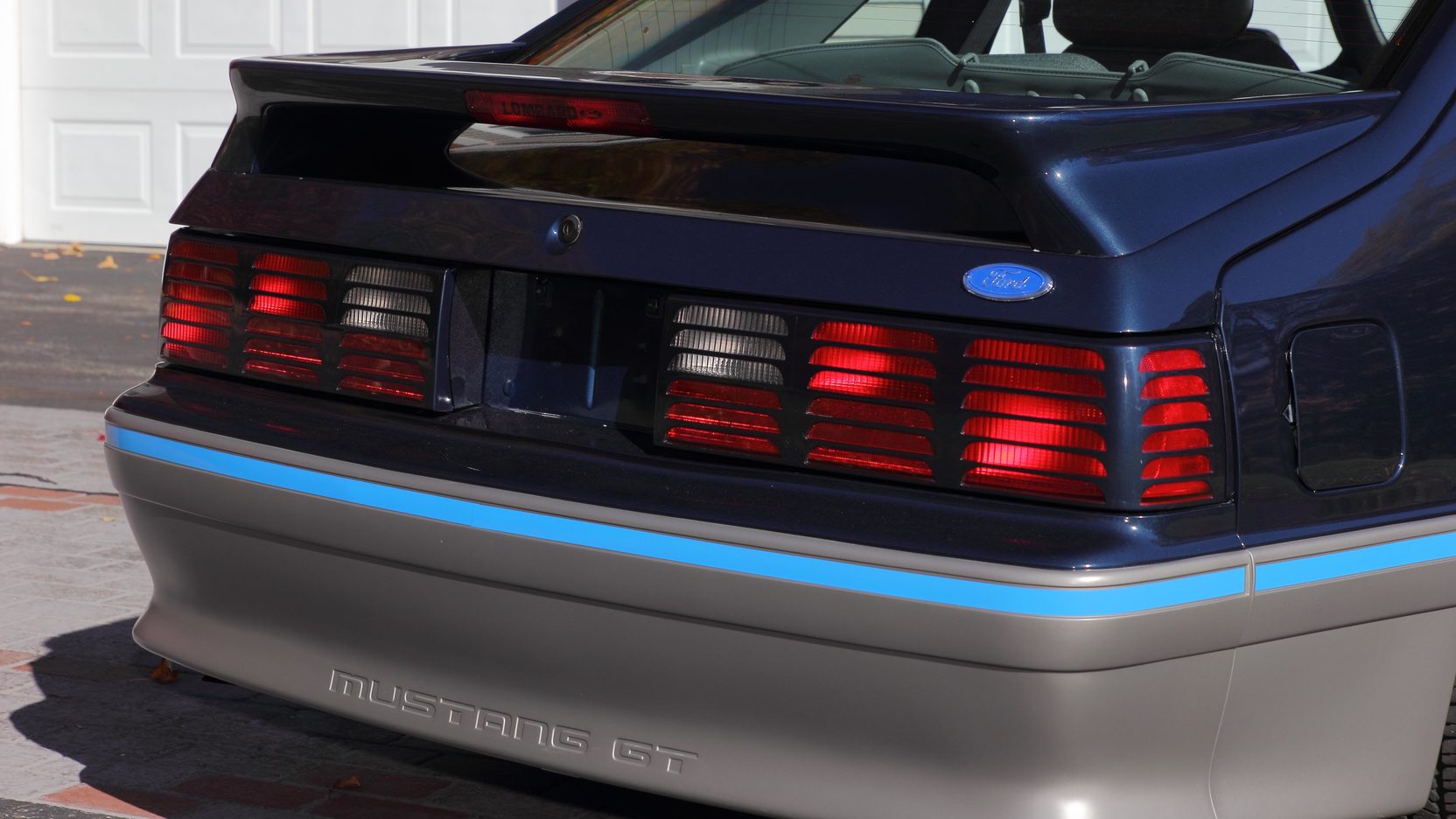
From 1987 onwards, engine codes got a lot simpler as there were really only two options available: a four-cylinder (A) or the 5.0 (E). In 1991 this was still the choice, but the four-cylinder became M in the VIN, and in ’93 D was added to represent the Cobra engine.
5.0 or SVO power?
As mentioned above, the early years of the Fox saw Ford run through a number of different engine options as the company measured customer response, got better at producing horsepower under EPA regulations, and rose up to meet the challenges brought by competitors from both Detroit (the Camaro) and overseas (the Nissan 300ZX, Mitsubishi Starion, and Toyota
Celica Supra).
For 1979 Ford was content to offer a 5.0-liter V-8 that was good for up to 140 horsepower and 250 lb-ft of torque, a horrendous Pinto-sourced, 88-hp, 2.3-liter four-cylinder, and a surprisingly forward-looking turbocharged 2.3-liter four that nearly touched the V-8 with its 132-hp rating. Briefly offered during the same year were a 109-hp, 2.8-liter V-6, and a truly weird 85-hp, 3.3-liter inline-six.
The famed 5.0 got off to a rocky start, however, as yet another energy crisis convinced the Blue Oval to downsize to a 4.2-liter eight-cylinder mill in 1980. With only 118 horsepower on tap, it was hardly a paragon of performance, which left the reliability-plagued turbo four as the only real choice for enthusiasts (although it, too, would disappear by the end of the year). By 1982, however, the 5.0 was back to stay, briefly sharing the order sheet with the 4.2 before that was retired the following year.

From 1983–86, the line-up would solidify around the base four, the turbo four (which returned in ’83 after a brief two-year hiatus), the V-6, and the V-8. Not all of these engines were created equal, however, with output fluctuating from one model to the next. Of most interest to collectors is the SVO (Special Vehicle Operations) version of the turbocharged four-cylinder, which squeezed 175–205 horsepower out of the 2.3-liter mill from 1985–86. The Mustang SVO also came with a more aggressive suspension setup, a limited-slip rear differential, four-wheel disc brakes, and unique rims, a special hood, and a blocked-off grille.
Early on its production, the SVO was on par with the GT in terms of factory horsepower, although by 1985 the 5.0 had added an extra five ponies to give it a little bit of breathing room. The true 5.0 renaissance, however, came with the move from carburetion to fuel injection in 1986, which caused the output of the V-8 to eventually climb to 225 horsepower and 300 lb-ft of torque (with a drop to 205 hp and 280 lb-ft in 1993 due to internal changes to the camshaft and pistons). The 1993 Cobra and Cobra R, however, were good for an advertised 235 horses. Any V-8 from this period was a huge step up over the only other choice customers were offered: an anemic 2.3-liter four-cylinder good for around 100 hp.
That’s the lay of the land from a factory perspective, although there’s no point in getting too caught up on advertised numbers when evaluating which 5.0 Mustang is right for you. From 1986–93, stock Mustang performance is going to be very, very close, regardless of the advertised output. The biggest difference within this range is going to be the presence of a speed density-based fuel injection system from 1986–88 versus the mass airflow meter cars sold from ’89–93. MAF-equipped engines are easier to modify for more power from a modern perspective, and are more desirable to the drag and track crowd.
Earlier cars (1979–86) show a much wider variance, especially when looking at turbo-fours and 5.0 cars. Emissions equipment of course played a big role in determining what Ford’s engineering team could do with carburetors in that era, but the aftermarket has been generous in terms of providing seemingly endless speed parts, rebuild options, and other go-fast gear for older 5.0 V-8s. The turbo-four has less support, but there are still shops that service them (and a reasonable online turning community surrounding them). The 4.2-liter oddball, however, isn’t worth pursuing if performance is important to you, and this also applies to any other four or six-cylinder iteration of the Fox.

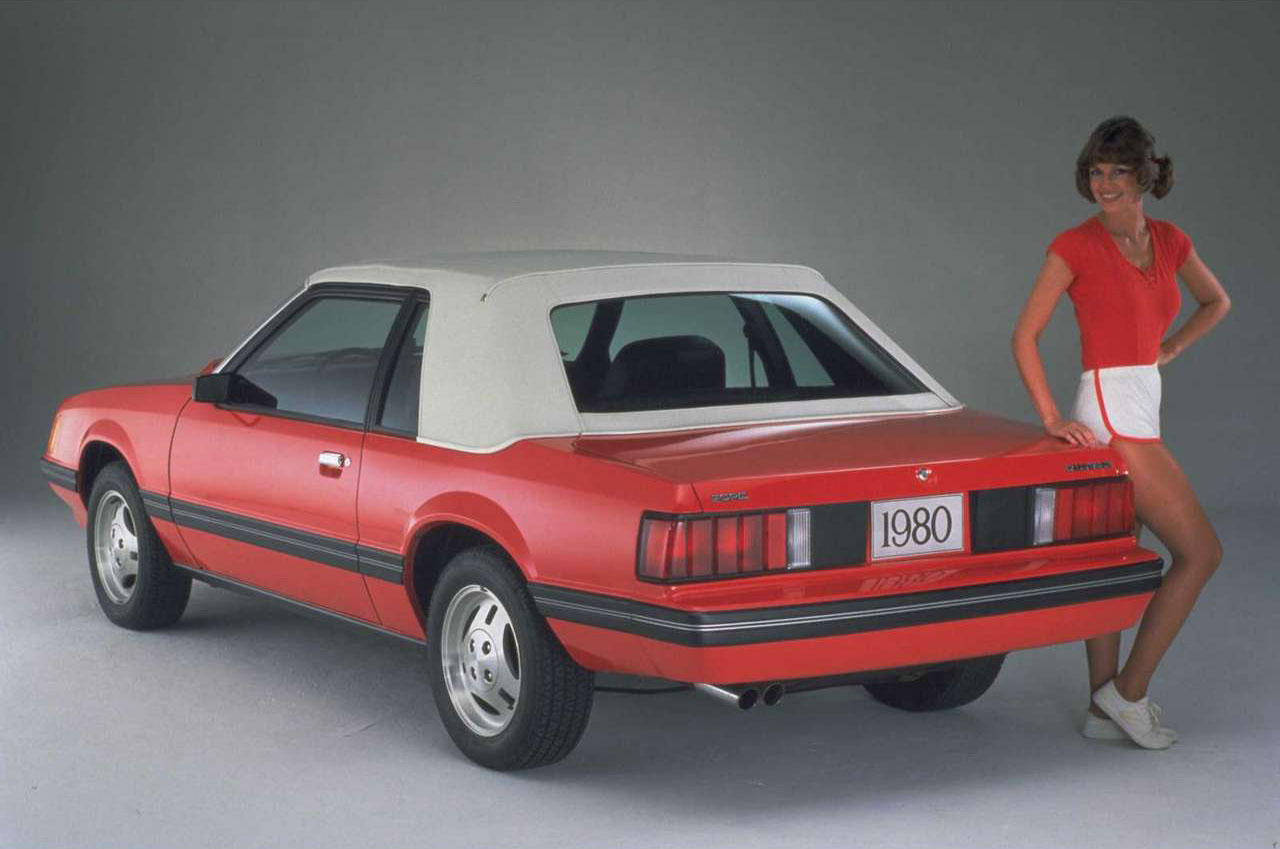
“We see far fewer people doing anything with pre-’87 cars,” says Chuck Schwynoch of Maximum Motorsports, a premier chassis supplier for Fox restorations and performance builds. “They’re simply more difficult to deal with because there’s less info about them overall—especially on stuff like brake systems. Cars from 1990–93 are the ones we encounter the most often.”
Jarrod Shelburne of Late Model Restorations, which is focused on bringing older Mustangs back to glory, agrees. “Engine parts for something like pre-’86 SVOs are not common, and it’s hard to locate any OEM components, period,” he says.
What to know with a 5.0
Shelburne says that mechanically the 5.0 is very near bulletproof, with no real “gotchas,” as long as you keep up with basic maintenance and make sure vacuum hoses don’t dry out and wiring doesn’t fray. You’ll also want to inspect the rear main seal for signs of leaking, and verify the condition of the water pump (there should be no play in the pulley).
Cars equipped with an 8.8-inch rear-end are prized for their ability to take abuse (note the SVO came with the smaller 7.5-inch rear), but the T5 manual transmission that came with the high-output V-8 is known to grenade should power rise significantly above stock.

“Most people go to a Tremec transmission, with T56 swaps being really popular right now, if they are serious about 5.0 performance,” Schwynoch explains. “At Maximum we chose to build up the T5 for our race car rather than doing the swap, because it’s lighter and shifts more smoothly than a T56, but either way you’ll need something stronger.”
He also cautions against going too crazy modifying the 5.0 without considering long-term reliability.
“The block itself will crack between the 400–500 horsepower mark—I’ve seen them literally split in half,” Schwynoch says, laughing. “A lot of people approach building the engine from a drag background, but you really need to make sure the rotating assembly is capable of living for more than just the 8–10 seconds of full throttle you typically see on a drag strip if you intend to take a Fox to a road course.”
Shelburne recommends doing a basic inspection of the engine of any car you’re looking at to determine whether it’s been modified or not, because aside from the small-block Chevy the 5.0 is perhaps the most customized motor on the hot rod landscape.
“It’s worth verifying whether the cams and heads have been changed. Most people run a GT40, Edelbrock, or Trick Flow type of intake manifold, which are fairly easy to spot, and there were a lot of combo kits that lumped everything together, which means if you see a different intake you could be dealing with non-factory heads too. If it was originally supposed to be a speed density car, look for a MAF, which will be in line with the air intake of the vehicle, as this was a very popular conversion. Finally, check to see if the car’s been upgraded to 24-pound fuel injectors, as that’s another common mod.”
Twisting and turning


The Fox-body Mustang is a unibody car that was notorious for having the torsional stiffness of a wet piece of cardboard. Even when inspecting a stock example, you’ll want to check the A pillar for cracking or dents, look for cracks around the rear windows (as well as bulging), and inspect the subframe for any signs of twisting or warping as a result of past abuse. On a car with aftermarket speed parts, you’re going to want to double your efforts at verifying that the unibody is still straight and true. The torque box, where the rear suspension mounts to the body of the car, are a known weak spot.
“We see the torque boxes damaged most often by aftermarket control arms that don’t have a good bushing design, but you can see it on hard-driven stock cars too from time to time,” Schwynoch says. The boxes themselves can be replaced, and there are plenty of reinforcement kits available as well.
“The single best thing you can do with the Fox is install subframe connectors,” he adds. “It improves both ride quality and handling at the same time, which is a rare win-win for a chassis upgrade.”
Both Schwynoch and Shelburne agree that subframe connectors—and in more extreme cases, a new front K-member—can go a long way towards straightening out a car that’s had some frame twisting. “Make sure you’re not dealing with poorly-repaired accident damage,” Schwynoch cautions. “If you can’t square the K-member to the chassis, that’s not normal.”
Rust is an issue on any car as old as even the newest Fox-body Mustang, and you’ll find it hiding most often inside the frame rails, on the subframe itself, the floor pans, quarter panels, and the shock towers.

“It really depends where the car spent most of its life,” Shelburne says. “If you’re from the northern part of the country, especially if it’s an earlier car, you’ll have to be more diligent. Down south, hardtop cars stay clean on top, but on convertibles where the top boot would be. And on T-top cars, you’ll find rust around the edges of the lip all the time, even here in Texas where our shop is located. If there was leaky weather-stripping at some point in its life, you’ll find rust now.”
For the most part, it’s not hard to source sheet metal for the Fox, as wrecking yards are full of four-cylinder cars no one had any interest in preserving. There are, of course, items that are harder to find than others, especially on early four-eyed cars.
“A lot of people look at the Fox like LEGO and think you can just swap panels from ’79 all the way to ’93, but that’s really not the case,” explains Steve Mitchell of Motor City Solutions Hot
Rods & Restorations, which specializes in the Fox’s sheet metal and
interior. “There are a few key differences between the early and later cars
that make that impossible.”
Specifically, 1986-and-earlier cars feature a filler panel that connects the front fender to the bottom of the bumper that’s become difficult to source (and which is absent on the ’87-and-newer cars). Also, starting in 1987 the Mustang’s front body work got a few inches wider, which makes it hard to put a newer front end on an older quad-light car. “The pieces will fit, but the alignment will be noticeably off,” Mitchell says.


Hatches remained the same size throughout the entire run, but glass can be different on earlier models, and the rear quarter windows changed completely in ’87, moving from a small pane combined with a louver to a full window, which can’t be interchanged. Taillight mounting points and designs also varied throughout production, once again introducing issues when trying to retrofit an early car with late-model indicators.
“Bumpers and ground effects are a challenge throughout all years, really,” Mitchell admits. “It’s hard to find good pieces in most cases for the ’86 on down, but a lot of the front noses, ground effects, and headlight mounting panels are getting scarce. On the ’93, too, there’s a rare rear wing setup that used four pedestal mounting points, almost like a race mount, which was completely different compared to what had been used before on top of the hatch.”
Inside the car, Mitchell says it’s a little easier to swap parts back and forth, with front seats and consoles all being nearly the same, but year-to-year differences have to be kept in mind.
“Door handles change position as you move through time, from lower to middle to upper on the interior panel, so make sure you find the right replacement door card. The same can be said of the dashboards, which have little differences almost every year. Some of these can affect the wiring harness too, like when the info deck on the older cars changed positions. For hatchbacks, you have to pay attention to the model year when ordering interior trim, because the different window design on 1979–86 cars means it won’t fit on later cars at all, and vice-versa.”
Why the Fox-body Mustang is still compelling
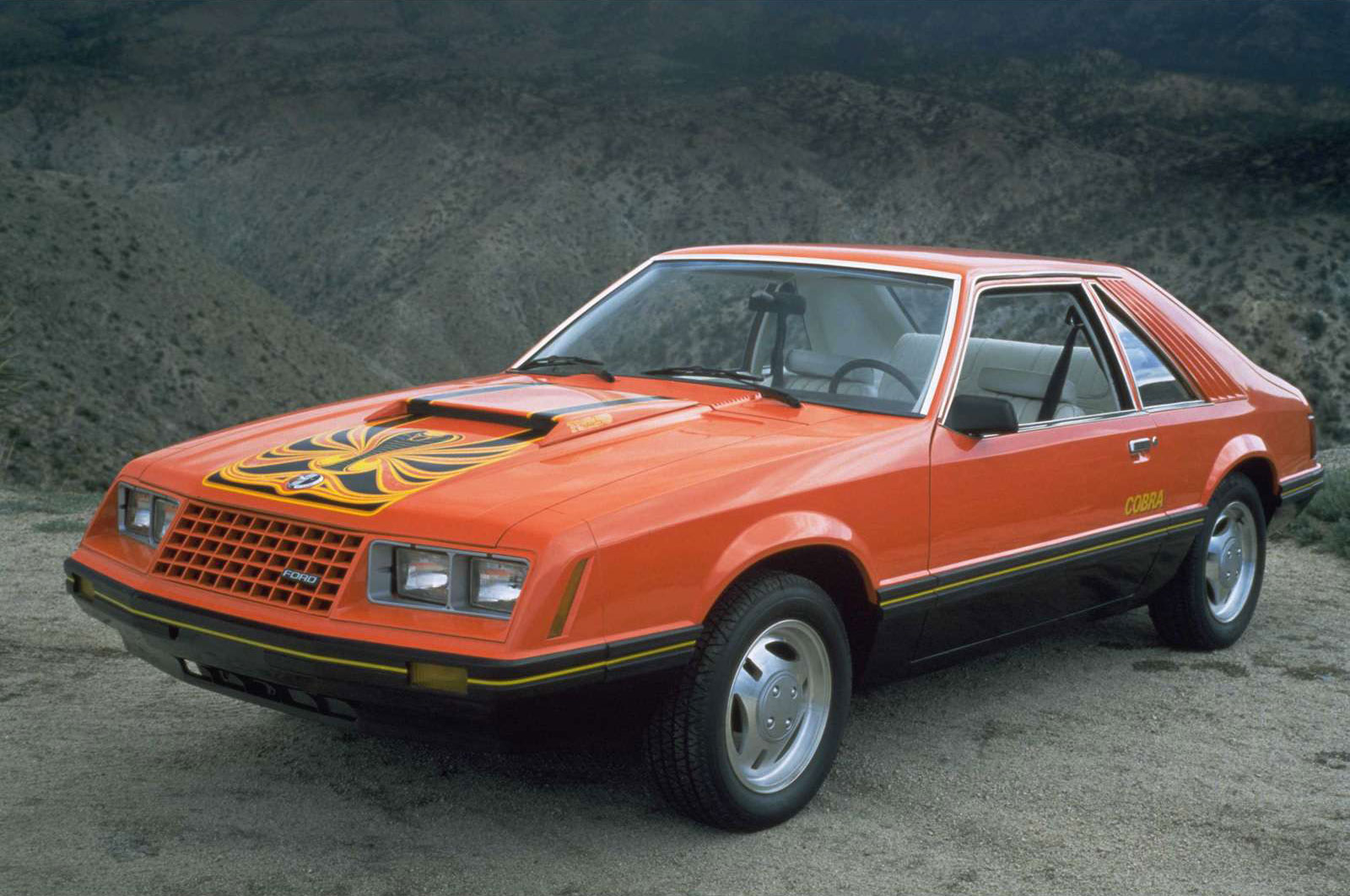
The 1979–93 Ford Mustang is one of the most approachable classics on the market. With so many built, the supply of clean restoration candidates is abundant, and extensive aftermarket support and an engaged fan base for these vehicles also guarantees a healthy number of tastefully updated or even expertly-tuned hi-po examples, too.
As with most performances cars from the 1980s and early ’90s, it’s key to avoid vehicles that have been carelessly modified or poorly maintained by third, fourth, and fifth owners—and if you’re concerned about performance or worried about parts availability, then the 1987–93 cars remain your safest bet.
Still, even with those caveats in mind, the affordability of the Mustang, combined with its fun factor, makes almost any V-8 or turbocharged car an appealing example of American muscle that’s just modern enough to be your daily driver without asking you to make sacrifices in comfort or reliability. Whether it’s a canvas for a period-correct drag car, or simply a fair weather cruiser, there are a million or two Mustangs out there waiting to introduce you to the world of the Fox.
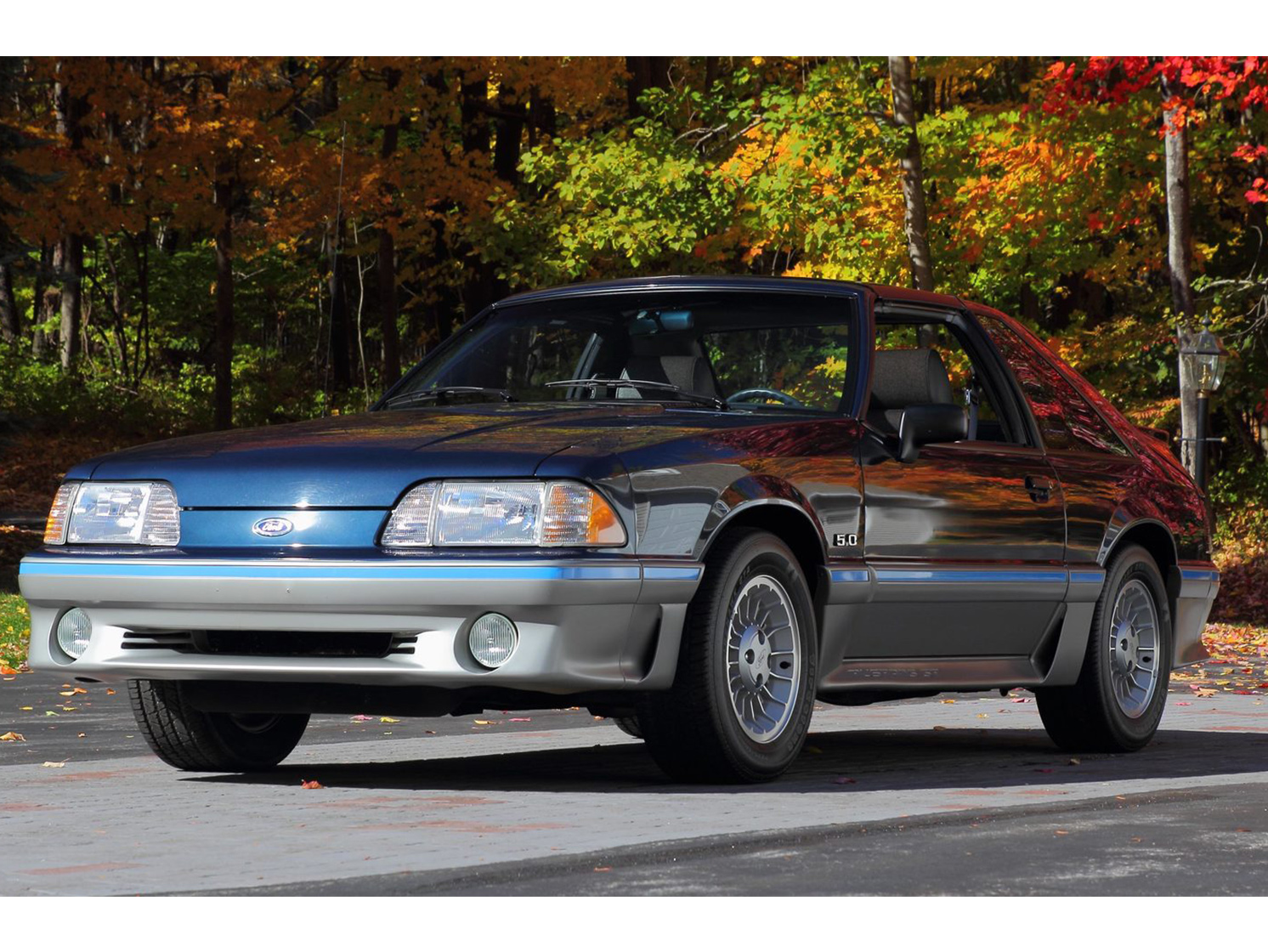

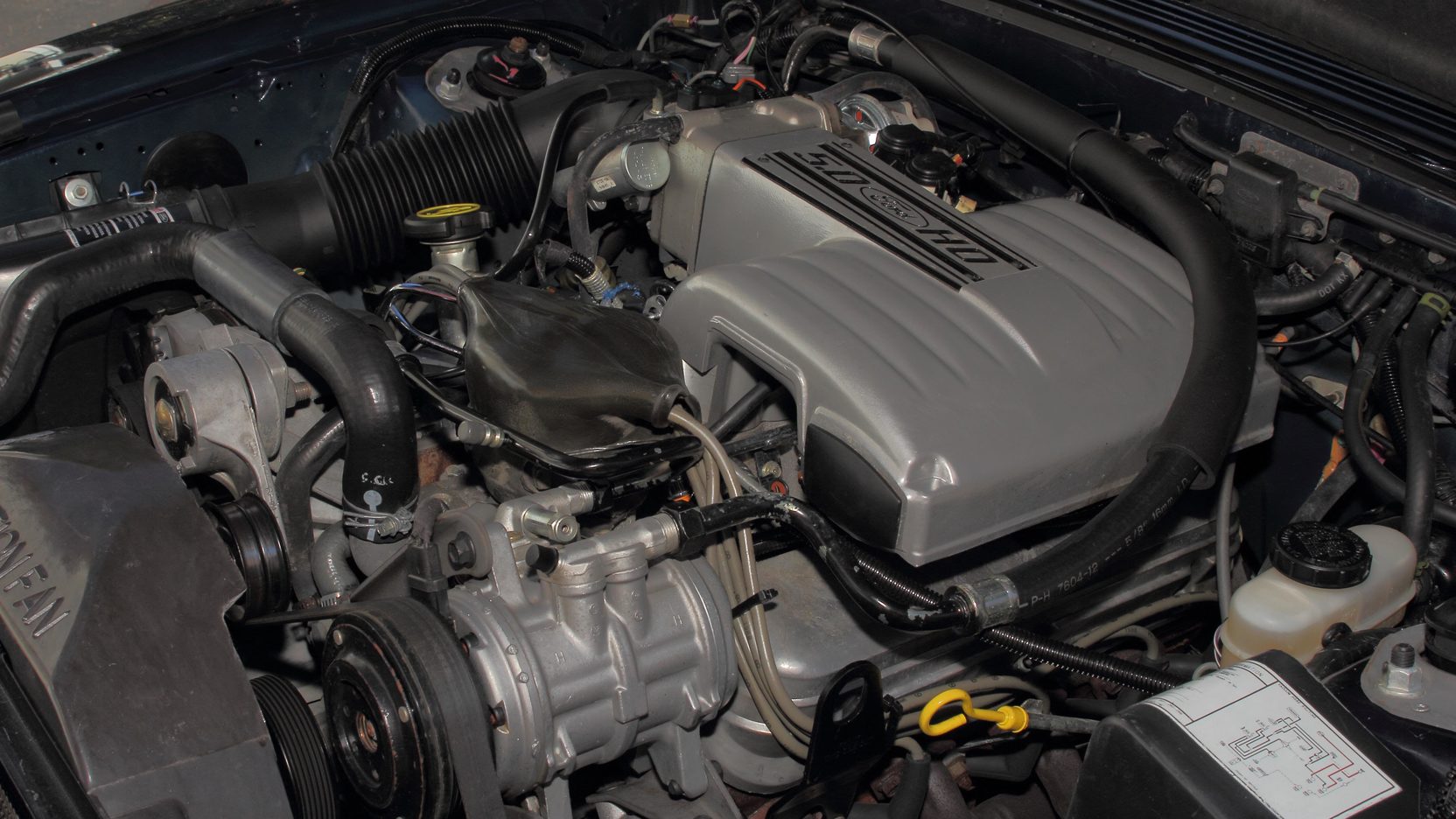


Stay away from T top cars, they were not done by Ford but outside shops and they are extremely flexible.